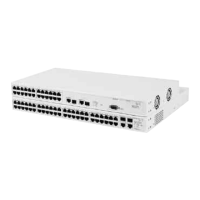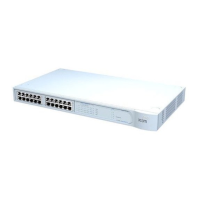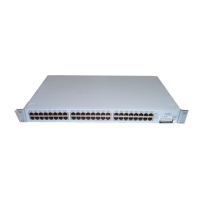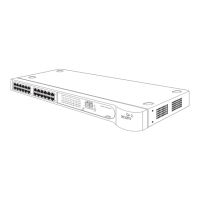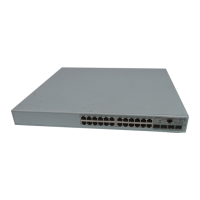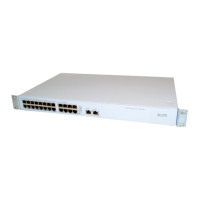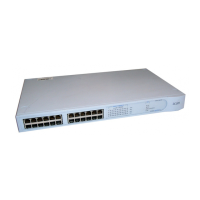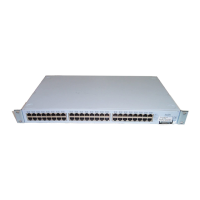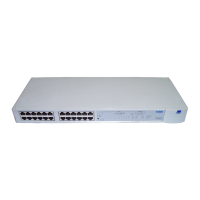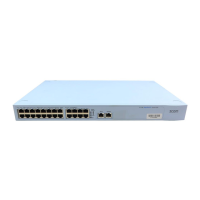88 CHAPTER 11: IP ROUTING
Implementing IP
Routing
To route network traffic using IP, you must perform these tasks in the
following order:
1 Configure VLANs.
2 Establish IP nterfaces on those VLANS.
Configuring IP VLANs If you want to use IP routing, you must first configure the VLAN to use IP.
You can create network-based VLANs that are grouped according to the
IP network address and mask.
See Chapter 8
for more information on VLANs.
Establishing IP
Interfaces
To establish an IP interface:
1 Determine your interface parameters.
2 Define the IP interfaces.
Interface Parameters
Each IP routing interface has these standard characteristics:
■ IP address — An address from the range of addresses that the
Internet Engineering Task Force (IETF) assigns to your organization.
This address is specific to your network and Switch. Refer to
Appendix C
for details on IP Addressing.
■ Subnet mask — The 32-bit number that uses the same format and
representation as an IP address. The subnet mask determines which
bits in the IP address are interpreted as the network
number/subnetwork number and the host number. Each IP address bit
that corresponds to a 1 in the subnet mask is in the
network/subnetwork part of the address. Each IP address bit that
corresponds to a 0 is in the host part of the IP address.
■ State — The status of the IP interface. It indicates whether the
interface is available for communications (
Up) or unavailable (Down).
This is not a user configurable parameter.
■ VLAN interface index — The number of the VLAN that is associated
with the IP interface. When the Switch prompts you for this option,
the menu identifies the available VLAN indexes.
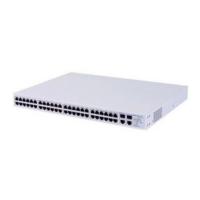
